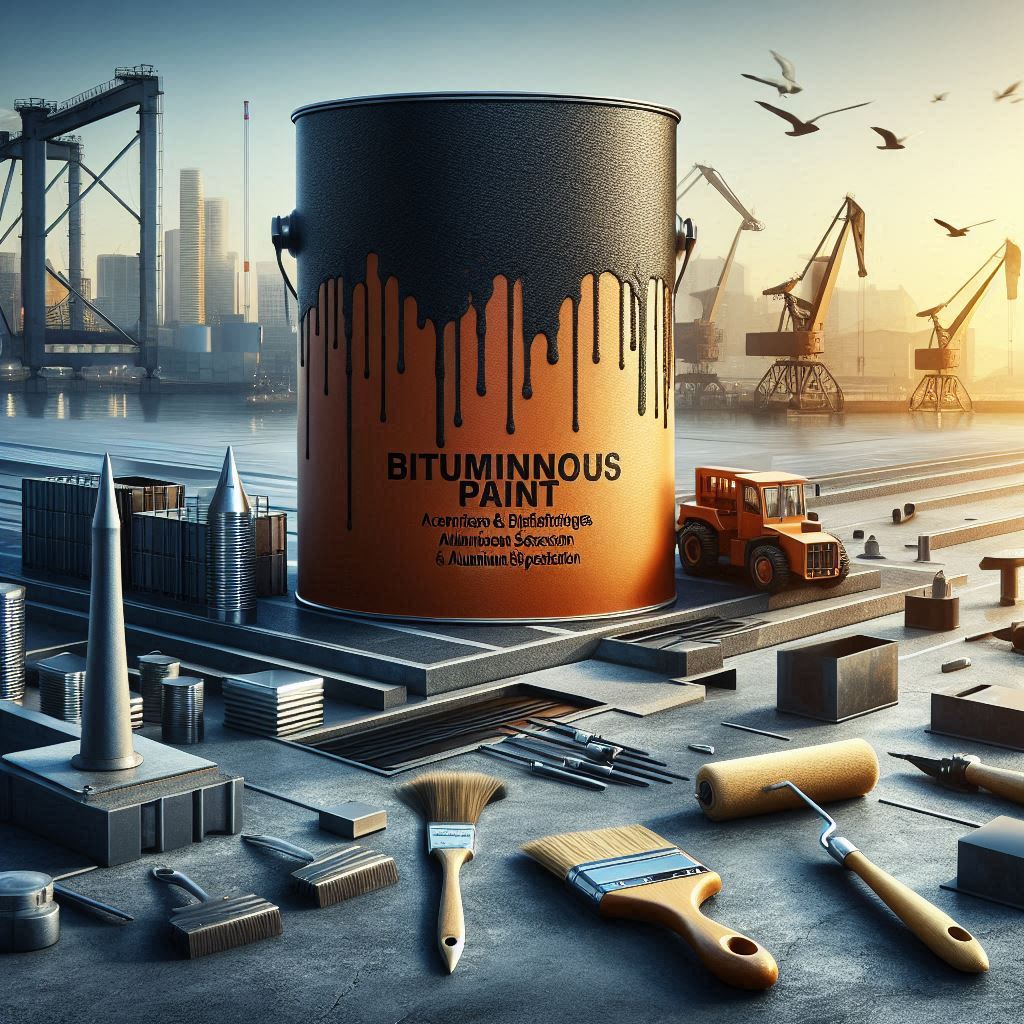
Bituminous Paint for Concrete & Aluminum: Advantages, Disadvantages & Specifications
Short Intro:
Bituminous paint is a versatile coating used to protect concrete foundations and aluminum surfaces from water and corrosion. Understanding its benefits, drawbacks, and proper application ensures long-lasting performance.
Introduction:
Bituminous paint, commonly known as asphalt coating, is widely used in construction and industrial sectors due to its waterproofing and anti-corrosive properties. It is ideal for concrete foundations, aluminum surfaces, and metal structures requiring protection from moisture, chemical exposure, and environmental wear. While it offers cost-effectiveness, flexibility, and simple application, users must consider its limitations, including aesthetic restrictions, UV sensitivity, and odor during application. This article explores the specifications, advantages, disadvantages, and practical guidance for using bituminous paint, anti-corrosive coatings, and enamel finishes.
SEO Snippet:
Bituminous paint provides waterproofing, corrosion resistance, and flexible application for concrete and aluminum surfaces. Learn how to apply it correctly, understand its pros and cons, and choose the right anti-corrosive enamel to extend surface longevity.
LSI Keywords:
- Asphalt coating for concrete
- Concrete foundation paint
- Anti-corrosive aluminum paint
- Bituminous coating advantages
- Bituminous paint disadvantages
- Waterproof foundation paint
- Enamel paint for metal
- Industrial paint specifications
- Corrosion-resistant coatings
- Primer for concrete and metal
External Links:
- The Paint and Coatings Industry Overview – Wikipedia
- Concrete Waterproofing Techniques – Portland Cement Association
- Aluminum Corrosion Protection – Aluminum Association
Bituminous Paint Advantages and Disadvantages
Advantages:
- Waterproofing – Creates a strong barrier that prevents water infiltration, protecting basements, foundations, and rooftops.
- Corrosion resistance – Shields metals from rust and chemical damage, ideal for steel structures and pipelines.
- Ease of application – Brush, roller, or spray methods make it suitable for concrete, metal, wood, and stone surfaces.
- Cost-effective – More economical than specialized coatings or membranes while providing reliable protection.
- Flexibility – Accommodates structural movements and minor substrate shifts without cracking.
Disadvantages:
- Limited aesthetics – Mostly black or dark shades, restricting decorative applications.
- Odor and fumes – Emits strong smells requiring proper ventilation during application.
- UV vulnerability – Prolonged sun exposure can degrade the coating; periodic maintenance is recommended.
- Temperature sensitivity – Extreme heat or cold may affect adhesion or curing.
- Variable durability – Lifespan depends on substrate preparation, environment, and maintenance.
Bituminous Paint for Concrete Foundation Specifications
Proper application ensures maximum protection and longevity:
- Surface preparation: Remove dust, oil, and loose particles; fill cracks for smooth coating.
- Primer application: Use concrete-compatible primers to enhance adhesion.
- Paint selection: Choose bituminous paint designed for concrete, ensuring corrosion and water resistance.
- Coverage and dry film thickness: Typically 100 microns, with proper liters/m² coverage.
- Application technique: Brush, roller, or spray evenly for uniform protection.
- Curing time: Follow manufacturer’s recommendations before loading or exposing to moisture.
- Backfill compatibility: Ensure the coating withstands contact with soil or aggregates.
Bituminous Paint for Aluminum
Aluminum surfaces require specific considerations:
- Surface preparation: Clean thoroughly to remove oxidation, oil, and contaminants.
- Primer application: Use metal-compatible primer for strong adhesion.
- Paint selection: Ensure bituminous paint is aluminum-compatible and corrosion-resistant.
- Application method: Apply evenly using brush, roller, or spray.
- Dry film thickness & curing: Follow manufacturer’s guidelines to maintain protective qualities.
- Maintenance: Inspect and recoat if necessary to prolong lifespan.
Anti-Corrosive Paint
Anti-corrosive paints protect metals from environmental and chemical damage:
- Key characteristics: Corrosion resistance, strong adhesion, chemical resistance, and durability.
- Applications: Steel, aluminum, galvanized surfaces, bridges, pipelines, and marine equipment.
- Maintenance: Regular inspection and recoating extend service life and reduce costs.
Enamel Paint
Enamel paint is known for a glossy, durable finish:
- Advantages: Glossy sheen, long-lasting, wide color selection, and fast drying.
- Versatility: Suitable for furniture, ornamental objects, walls, metal, concrete, and wood.
- Application tips: Ensure proper surface preparation, even coating, and ventilation to avoid VOC exposure.
Conclusion
Bituminous paint offers cost-effective waterproofing and corrosion resistance for concrete foundations and aluminum surfaces. While aesthetic options are limited and UV exposure may reduce longevity, proper surface preparation, primer use, and application technique maximize benefits. For metals, anti-corrosive paint ensures prolonged durability, while enamel finishes enhance aesthetic appeal and provide additional protection. By carefully evaluating project requirements, environmental conditions, and maintenance protocols, bituminous paint can significantly extend the service life of both concrete and metal structures.
Long-term performance relies on routine inspection, touch-ups, and occasional recoating. When applied correctly, bituminous coatings, anti-corrosive paints, and enamel finishes are essential tools in both construction and industrial maintenance, ensuring structures remain functional, durable, and protected against moisture, chemicals, and environmental stress.
About Novin Trades
Novin Trades is a leading supplier of high-quality industrial paints, coatings, and chemical solutions. Their products include bituminous coatings, anti-corrosive enamels, and specialty paints suitable for concrete, aluminum, and other industrial surfaces.
Stay updated with the latest products, offers, and technical advice by joining their Telegram channel. Novin Trades provides expert guidance to ensure correct product selection, application techniques, and maintenance recommendations for long-lasting protection and superior performance.

